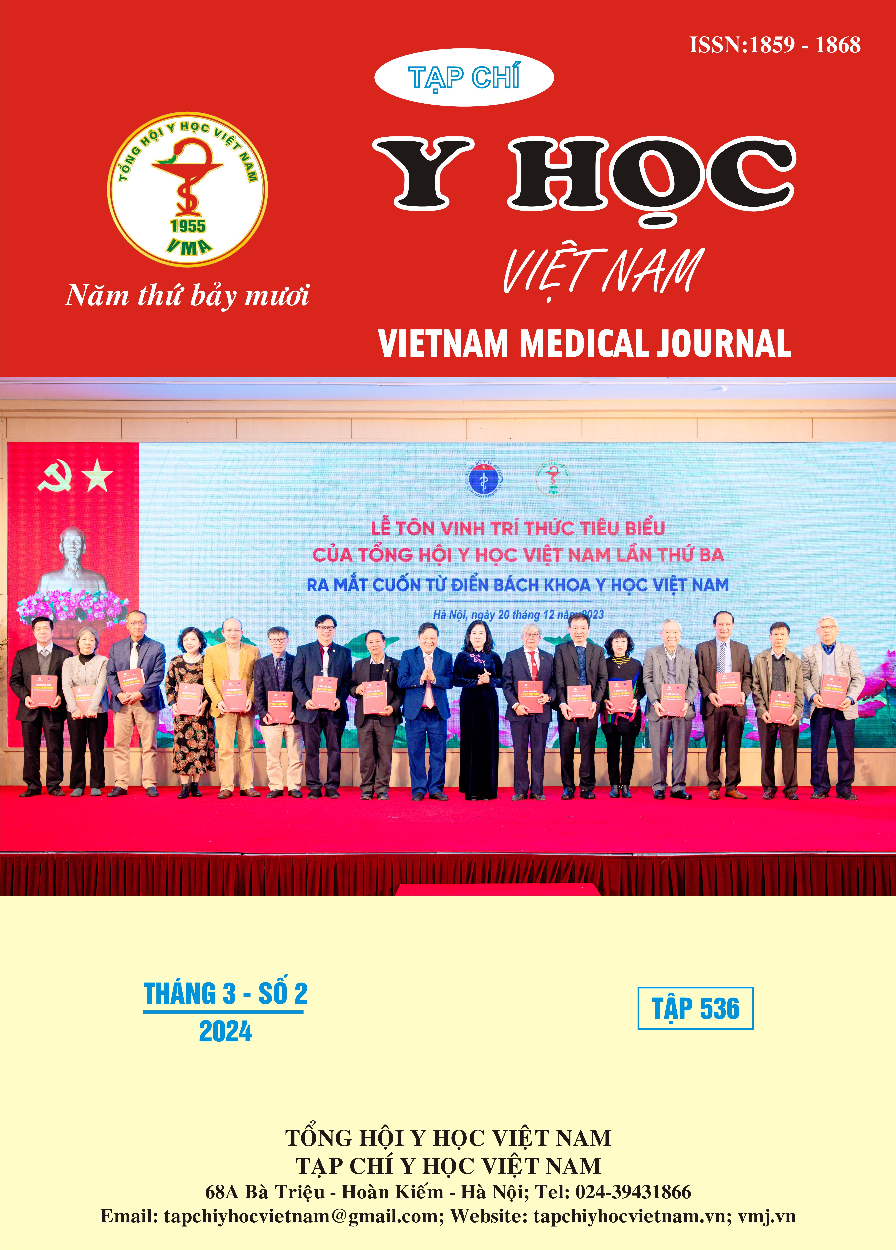EVALUATION OF THE PAIN RELIEF EFFECT OF THE METHOD ELECTROMAGNETIC COMBINATION TO STRETCH THE SPINE IN PATIENTS LUMBAR SPINAL DISC HERNIATION
Main Article Content
Abstract
Objective: Lumbar disc herniation is a common clinical disease in all ages, both men and women, with an increasing rate due to living habits in modern life. Methods: The disease is manifested by two main syndromes: spinal syndrome and nerve root syndrome, in which pain is the main symptom that causes the patient to seek medical attention as well as limit daily activities. The study was conducted to evaluate the pain relief effect of electroacupuncture combined with stretching the lumbar spine. Results: Using the clinical intervention research method, comparing before and after and having a control group on a total of 66 patients after 30 days of treatment, the results were given: the VAS scale score decreased significantly. Achieving 90.9% treatment effectiveness, 9.1% no results. Conclusion: The combined method of electroacupuncture and stretching is statistically better at treating lumbar disc herniation than the stretching method alone.
Article Details
References
2. Hồ Hữu Lương (2008), Đau thắt lưng và thoát vị đĩa đệm, Nhà xuất bản Y học, 92-96, 135-137, 144-171.
3. Nguyễn Xuân Nghiên (2008), Phục hồi chứ năng, Nhà xuất bản Y học, Hà Nội 34-36, 165-171.
4. Nguyễn Tài Thu (1995), Tân châm, Nhà xuất bản Y học, Hà Nội 7-114.
5. Nguyễn Tài Thu, Trần Thúy (1997), Châm cứu sau đại học, Nhà xuất bản Y học, Hà Nội 246-248.
6. Bùi Thanh Hà, Trần Quốc Bảo, Đỗ Việt Phương (2010), Nghiên cứu hiệu quả của điều trị thoạt vị đĩa đệm cột sống thắt lưng bằng phương pháp kết hợp điện châm với kéo giãn cột sống, Tạp chí Y học Việt Nam, tập 376, 74-80.


